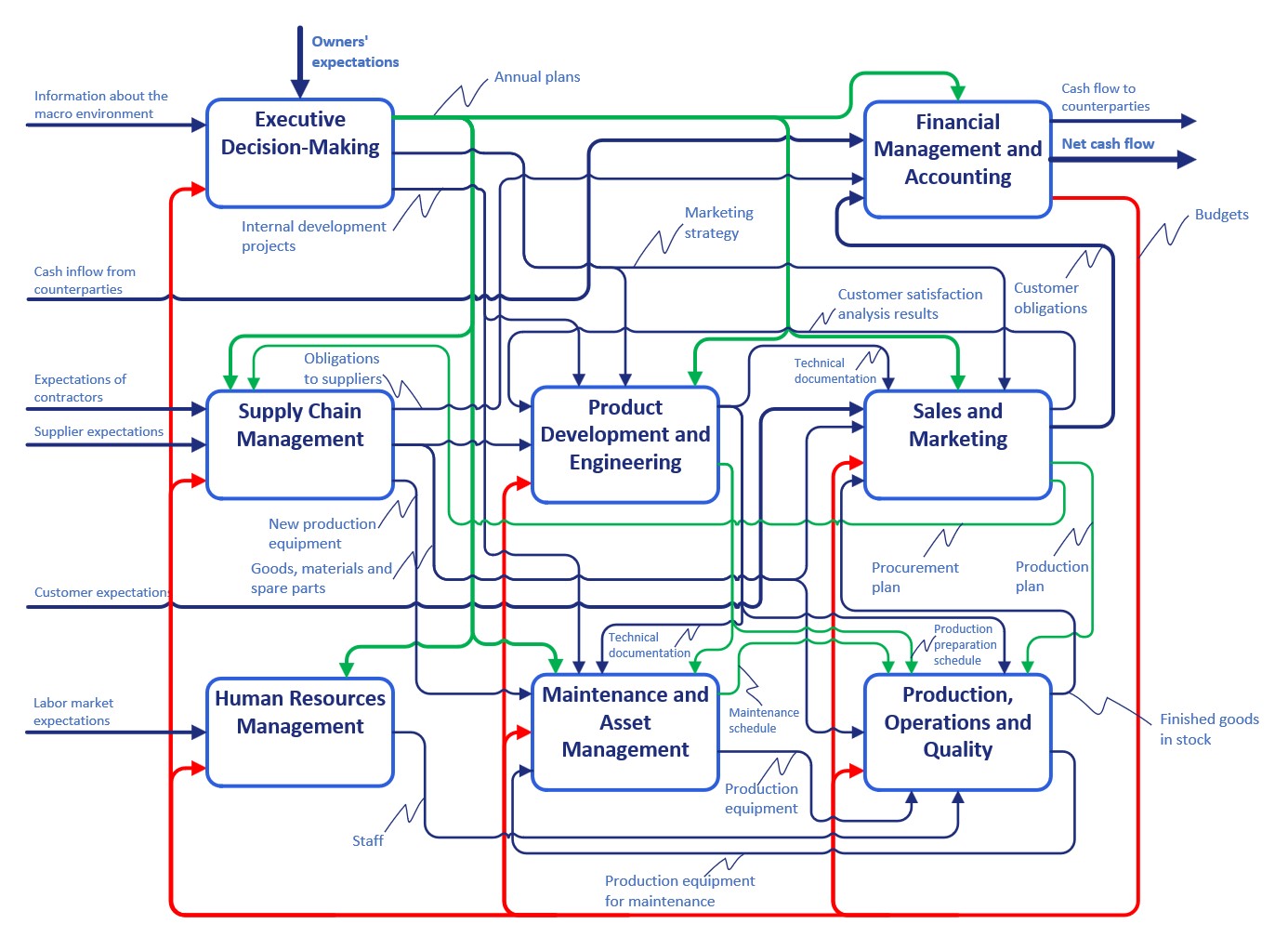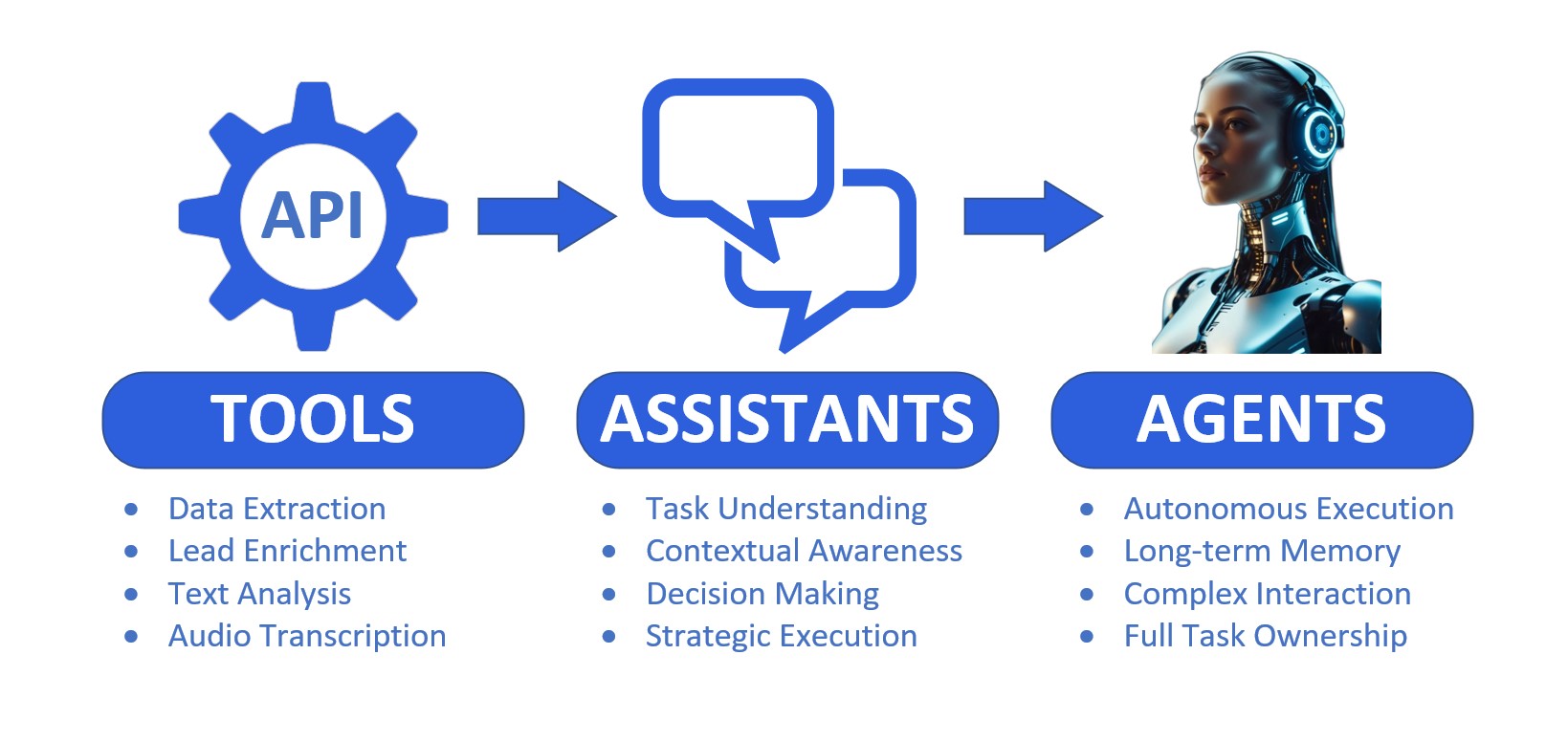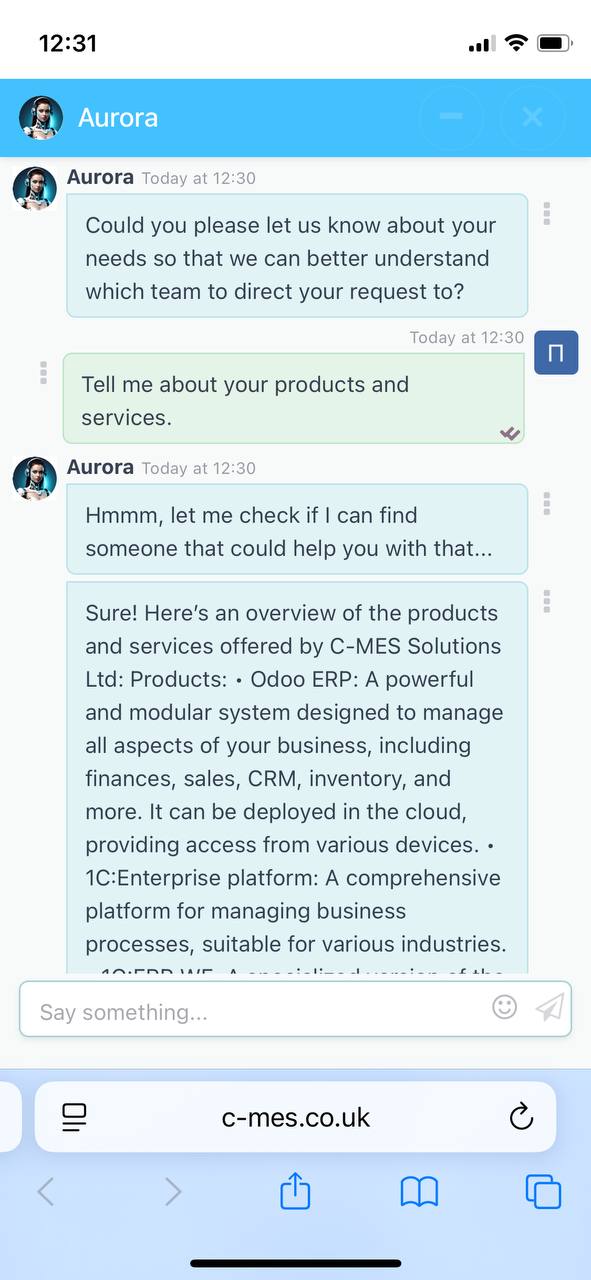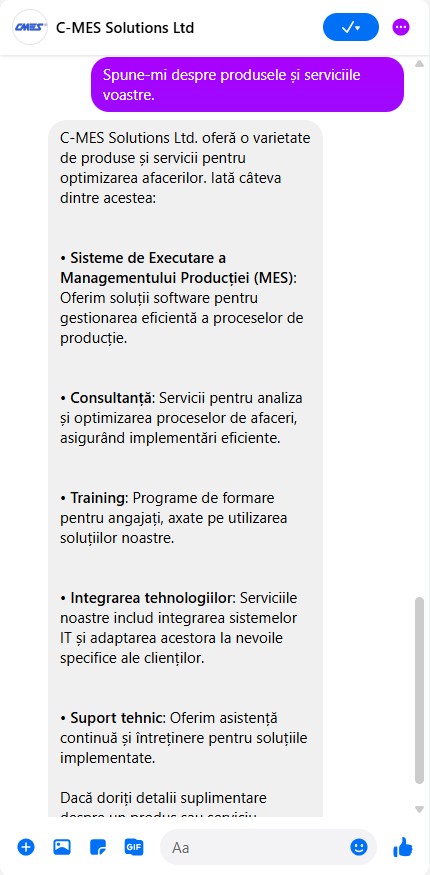AI-Staff
Transforming Business Starts Here
Cloud-based staff
In modern business, a key factor for success is not just innovation, but also the optimization of work processes. Our company presents a new direction in business process automation using artificial intelligence (AI). We will help you significantly enhance the effectiveness of your operations by implementing AI agents into the core functions of your business. Reducing labor costs is a pleasant byproduct that you will experience after implementing our solutions.

Business process automation using AI
Having specialized for many years in automated process management for enterprises, we focus on them as systems made up of interconnected groups of processes. In this context, we strive to eliminate the direct human involvement in routine business functions. Our ambitious goal is, in the long term, to completely eliminate the human factor by replacing it with AI agents that not only carry out routine tasks but also facilitate decision-making. This allows us to optimize processes and significantly increase sales and production volumes. Our aim is for your enterprise to generate maximum net cash flow (NCF) for you.
Capabilities and benefits
Automated management is conducted through hardware and software means, with human involvement in the decision-making process only as necessary. We view automation as a way to increase labor productivity, which allows for an increase in production volumes while maintaining quality.
We rely on our concept: the enterprise is a management object, and we, as experts in automated process management, represent it as a system of interconnected processes. Our company sees manufacturing enterprises as a process model consisting of 8 groups of processes, each contributing to overall efficiency:
- Executive Decision-Making: The CEO approves management decisions to achieve desired efficiency metrics.
- Sales and Marketing: The sales department works to achieve targeted sales volumes for products, services, and work.
- Product Development and Engineering: The technical department develops new products and creates documentation.
- Production, Operations and Quality: Manufacturing processes ensure the execution of production plans for products, services, and work.
- Supply Chain Management: Ensuring the stability of purchasing necessary materials, services, and work for production.
- Human Resources Management: The HR department works on staffing production and increasing labor productivity.
- Maintenance and Asset Management: Engineering and maintenance divisions ensure optimal equipment configuration and stability of operations.
- Financial Management and Accounting: The accounting department supports financial sustainability.
Modern ERP systems, especially those sold and implemented by our company, meet the needs of enterprises in automating routine tasks and functions, but still require humans for their operation. You already know the challenges this poses for your business.
Transition to AI as a Solution
The development of artificial intelligence systems has been underway for many years. Over this time, we have progressed from primitive algorithms and basic chatbots to multi-layered intelligent agents capable not only of automating routine tasks but also of successfully tackling challenges that require expert knowledge, logic, and even empathy.
However, despite the rapid advancement of technology, not everyone still understands what exactly we are offering and the essence of our system. Let’s delve into what AI agents are, how they are structured, and why they truly perform more efficiently than humans.
Architecture of the Intelligent System
Our system is built on a modular principle, resembling a technological pyramid. At its base are tools (AI Tools), followed by assistants (AI Assistants), and at the top are agents (AI Agents).
Level of Tools (AI Tools)
This is the foundation of our architecture — simple yet powerful modules, each designed to tackle a specific task. Essentially, these are intelligent API functions: they receive input data and return results. Examples of such tools include:
- Intelligent search and data collection from the internet, extracting relevant information. It is used for lead generation, supplier search, competitor analysis, and other tasks.
- Lead enrichment — automatic collection of contact details and publicly available information about companies via email, domains, LinkedIn profiles, and other sources.
- Extraction and structuring of data from documents — text analysis, entity extraction, and preparation of data for vectorisation for subsequent use in a knowledge base.
- Transcribing audio and video to text for further analysis and inclusion in workflows.
These tools can be used individually or as building blocks for more complex solutions.
Level of Assistants (AI Assistants)
Assistants represent the next level of complexity. They combine several tools and operate within the context of a task. Unlike individual modules, assistants:
- Understand the essence of the task at hand
- Analyse the tone, intentions, and goals of communication
- Consider the temporal context (what has previously occurred in the dialogue)
- Utilise both internal and external knowledge bases
- Launch intelligent searches on the internet when necessary
- Independently select the required tools and strategies for execution
An assistant is like a well-informed specialist who not only follows commands but also comprehends the task, makes decisions, and maintains logical coherence in communication. They operate in a dialogue format and can conduct productive conversations in a "question-answer" mode.
Level of Agents (AI Agents)
At the top are the agents. These are full-fledged virtual employees: they have a name, email, phone number, personality, and behavioural model. They act like real people:
- They accept tasks and carry them out from start to finish
- They interact with users, systems, and APIs
- They actively utilise tools and assistants
- They possess long-term memory and accumulate experience
- They plan actions, engage in lengthy dialogues, adapt, and make decisions
Our agents are ready-to-use performers that can be integrated into business processes today. They can:
- Respond to client and employee inquiries via telephony, SMS, email, online chats, popular messengers (including Microsoft Teams), as well as support ticket systems
- Generate and send commercial proposals, negotiate, plan tasks, analyse refusals, and adjust behaviour
- Work with internal systems — CRM, ERP, and others
- Collaborate with human employees or fully replace them in certain processes
An agent is not just an interface; it is an autonomous team member capable of learning from experience, forming new knowledge, and applying it in the future. They work around the clock without days off or vacations, are proficient in most commonly spoken languages, and are always punctual and polite.
In effect, an agent performs the same functions as a human employee. Only faster. Cheaper. And more reliably.
Each level of our architecture — from tools to agents — can be used either individually or in combination, depending on the task. The tools can be easily integrated into existing CRM and ERP systems through APIs and integration tools, and they can also serve as a foundation for creating your own assistants and agents. This allows not only for scaling solutions but also for adapting them to specific business processes: from targeted automation to complete replacement of employee functions:
Executive Decision-Making: For now, we will leave this function to human agents. But this is temporary…
Sales and Marketing:
- Lead Generation: This method employs arbitrary queries to search for publicly available information about interested companies on the internet. It enables the quick collection of data on potential clients, their products, services, and market activity.
- Lead Enrichment: This method allows for the gathering of additional data about potential clients based on minimal information, such as an email address, company website, or a letter containing links to the company’s site. This is critical, as enriched leads help to better segment audiences, optimise marketing campaigns, and enhance sales effectiveness.
- AI Sales Agent : This involves finding potential clients and generating leads, forming proposals for potential buyers based on enriched leads, managing correspondence related to the generated proposals, and converting potential clients into actual ones.
Product Development and Engineering: For now, we will leave this function to human agents. But this is temporary…
Production, Operations and Quality:
Functionality for Companies with Project Activities:
- AI Project Manager: Generates project documentation, plans, and monitors the execution of project tasks.
- AI Consultant: Provides preliminary assessment of client tasks, formulates proposals for technical assignments, manages correspondence related to these proposals, drafts specifications, and supports users.
- AI Architect: Evaluates technical assignments, develops solution architectures, monitors assembly and testing results, and adjusts architecture as necessary.
- AI Developer: Writes code based on the received technical assignments (currently available for Odoo and 1C systems, and programming languages such as Python, C++, and C#).
- AI Tester: Tests the written code for compliance with requirements and generates a list of errors.
- AI Technical Writer: Creates descriptions of developed functionalities in the form of instructions and regulations.
- AI Technical Support Agent: Provides first-line technical support, resolving the majority of user inquiries.
A range of functions has been developed to automate our internal processes and will not be published as an API for public use. The descriptions are provided for reference — so you can understand which processes in your business can also be automated using our know-how and developments in this area (especially when actively using accumulated historical data, organised into 'knowledge bases').
- AI Planning Agent: Enables more efficient production schedules to be generated within our products from the the "Production Management" line. This solution significantly reduces the time required to form production schedules.
Supply Chain Management:
Functionality that automates procurement processes and interactions with suppliers:
- AI Procurement Agent: Similar to a sales agent, it also utilises lead generation but focuses on finding potential suppliers based on specified parameters (product/service categories, geography, technologies, ratings, etc.). It performs initial evaluations of the identified suppliers and selects the most suitable ones for participation in commercial requests. It collects proposals from suppliers, manages correspondence regarding terms, negotiates delivery conditions, and adds suppliers to the register of verified counterparties.
Human Resources Management: No work in this area is anticipated. For understandable reasons.
Although we do not develop educational solutions in this field, we recommend paying attention to our colleagues' platform: GradeBuilder is an AI-powered B2B platform that optimizes hiring, training, and assessment. It centralizes talent management, offering data-driven insights for workforce developmentand training and reducing costs while enhancing productivity across teams.
Maintenance and Asset Management: For now, no work in this area is anticipated. The solutions we propose, Odoo ERP and 1C:ERP WE, fulfill business needs.
Financial Management and Accounting: For now, no work in this area is anticipated. The solutions we propose, Odoo ERP and 1C:ERP WE, fulfill business needs.
By leveraging AI-Staff’s tools, assistants, and agents, you can dramatically cut personnel costs—by a factor of 50 or more—based on our hands-on experience using them in our own operations.
Want to see our AI-agents in action?
You can chat with our multilingual AI-agents right now — directly from your favourite channel.
They greet users, answer questions, qualify leads, and escalate to a human if needed. All in real-time, 24/7, and in any of 100+ supported languages.
Take a typical sales process: identifying potential clients, analysing their websites, entering data into a CRM (lead qualification), preparing personalised commercial offers (template-based but tailored to each client), sending emails, setting reminders, handling responses, managing correspondence, and following up regularly. On average, a single salesperson can handle around 50–60 new leads and reply to 10–15 inbound messages per day.
If you're working with an existing contact list, there’s no need for lead sourcing or qualification—but even then, the number of emails a human can respond to caps out at roughly 50–60 a day. Now substitute your own numbers: the total cost of one salesperson (salary, taxes, holidays, etc.) and your conversion rate from lead to successful deal.
In contrast, our AI sales agent can generate up to 1,000 new qualified leads per day at a cost starting from £0.10 per lead, and close deals at an average cost of £0.05–£0.10 (depending on token usage), typically within 1–2 months. It can simultaneously maintain correspondence with thousands of potential clients, respond to questions, send follow-ups, and escalate complex queries to a supervisor. The supervisor provides the answer, and the agent updates its own knowledge base accordingly. The additional cost per deal depends on how many tokens are used—ranging from £0 (if the lead isn’t interested) to £0.10–£0.20 for technically detailed cases requiring supervisor input and context updates.
We’re confident that adopting our automation API will significantly boost efficiency while reducing costs for your business. Upon registration, you’ll receive a ready-to-use API key and a £5 credit to try out our tools immediately.
We're constantly refining our AI agents to take over every staff-level task and will continue expanding our API capabilities to maximise your business productivity. Soon, we’ll be introducing a web-based interface on our site that lets you create and manage agents without any integration—ideal even for companies without a CRM or ERP system in place.
For detailed information on our API and its capabilities, visit the API Reference page. For a full overview of pricing, please see our Tariffs page.




